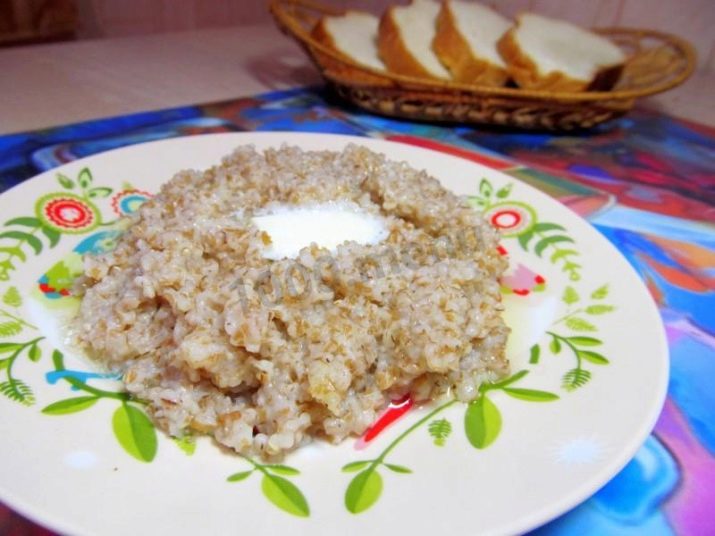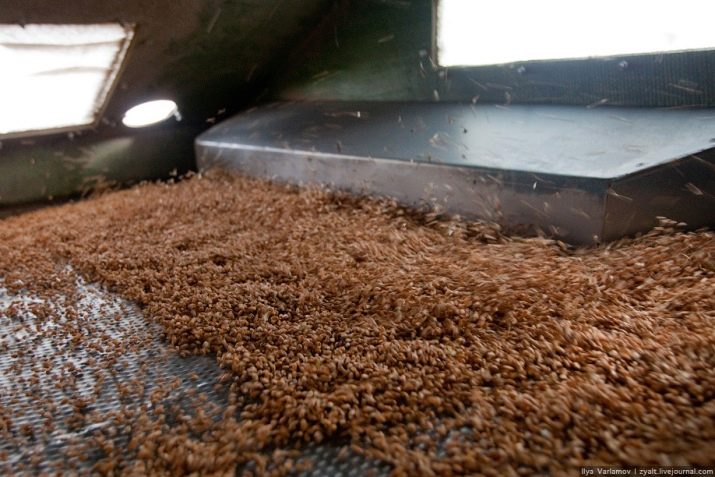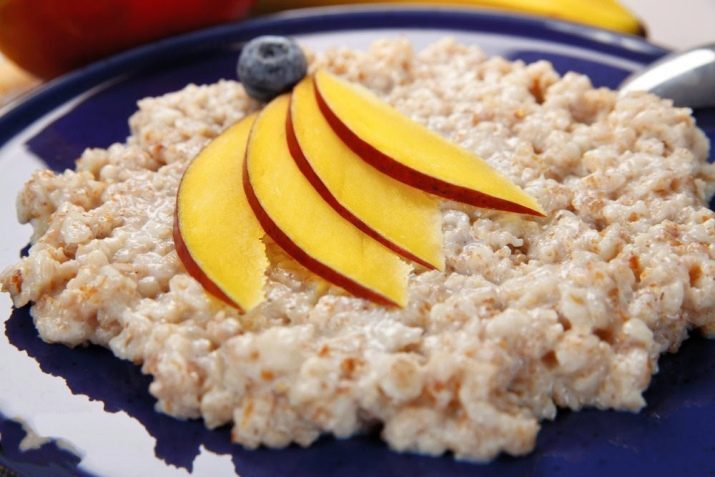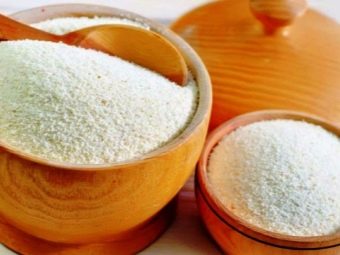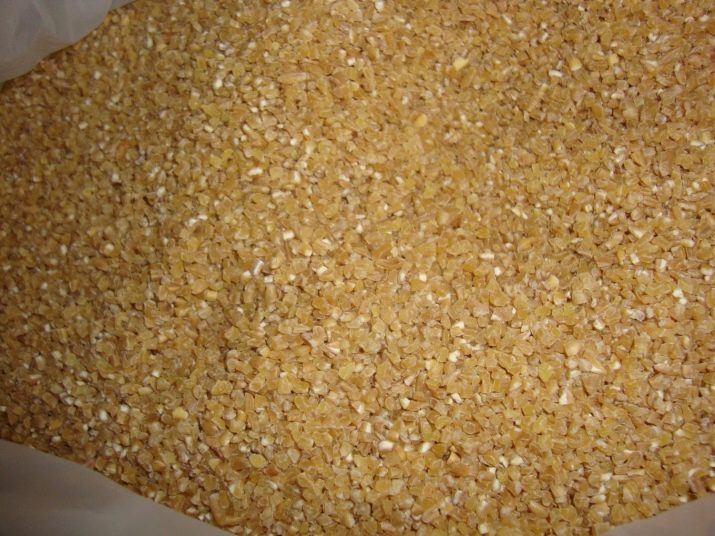Varieties of wheat cereals
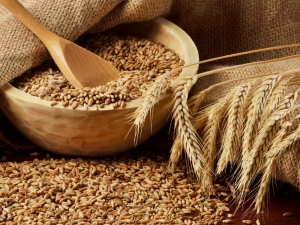
For a long time, wheat cereal was an obligatory dish on the table of any noble person.She symbolized wealth and prosperity of the host. When following a classic recipe, wheat cereal dishes are appetizing and tender. For a long time, it was served as an independent product, and only a few years later wheat cereals began to act as a side dish for meat or fish.
Cooked food from wheat cereals is not only tasty, but also very useful for the human body. No wonder wheat dishes are introduced into the diet of patients with diseases of the digestive system. About what kinds of wheat cereals exist, will be discussed in the article.
Special features
In turn, the composition of the embryo can be found polysaturated fatty acids - linoleic and linolenic, which are true allies in the fight against overweight.
Wheat grains are obtained from grains of two varieties - soft and hard. For the first, ten to fifteen percent protein is typical, for the second, more than twenty percent. However, the second variety is more often the first to die due to adverse weather conditions, while soft wheat stably produces a bountiful harvest. But groats are made exclusively from durum wheat.
Wheat grains are used to produce cereals. The grain itself consists of three main parts: the embryo, the shell and the endosperm. The latter is a powdery core, containing a set of useful and nutritious elements.
Wheat groats, in essence - this is crushed endosperm, which was well cleaned from the other two main parts. The size and shape of the grain determines the type of cereal. Wheat germ has a small amount of protein, phytoestrogens, phytosterols and oils with very useful and valuable for human body vitamin E.
Regular consumption helps to reduce the amount of subcutaneous fat. But in the process of cereal production the germ and the shell are removed from the grains. This is done to ensure that food prepared from wheat groats does not give off a bitter aftertaste. However, industrial production of remote elements of wheat give pharmacological companies. Which, after some procedures, sell wheat germ as a dietary supplement.
You can cook porridge from dried and boiled water processed bulgur cereal. It is not produced by grinding, it is not fragmented, but whole.
Benefits and contraindications
Wheat varieties today quite a lot. But the agricultural industry produces only two varieties of cereal, calling them soft and hard. For the first, soft varieties of wheat is characterized by a small amount of protein. In this regard, this grade is sent to the manufacture of flour, which is subsequently used in the confectionery industry for making bread and various pastries.
Solid variety has a fairly high content of protein in the composition of this cereal culture. Therefore, it is used to produce pasta and various cereals. The pips are subject to obligatory processing, which, depending on the method, either completely or partially removes the shell and the embryo. After that, the grains are sent for grinding, after which they acquire the usual form of cereals.
Wheat culture is considered one of the lowest-calorie, and therefore it is often used to produce dietary dishes.
One hundred grams of the product contains approximately three hundred and thirty-five kilocalories. Before using any product, it is advisable to get acquainted with its useful properties and possible contraindications. First of all, wheat grains are very popular due to their firming effect and an impressive amount of useful vitamins and trace elements important for the human body. So, the usefulness of this product is as follows:
- wheat cereals are an organic source of energy and strength;
- strengthens the human immune system;
- favors the discharge of extra pounds;
- promotes healthy digestive organs;
- has a firming effect on the walls of capillary vessels;
- promotes rapid healing of wounds or cuts;
- favorably affects the functioning of the nervous system;
- wheat cultures are natural regulators of lipid metabolism;
- lowers cholesterol in the blood vessels;
- improves the functioning of the heart, brain and blood vessels;
- improves the quality of hair follicles, skin and nail plate;
- helps to remove toxic substances from the body, slags, heavy metal ions, as well as the remnants of the elements from taking the antibiotic;
- with regular use of wheat cereal in the morning the body receives the necessary dose of energy and strength, and a long digestion of fiber and slow carbohydrates gives a feeling of satiety for quite a long time.
Wheat porridges can cause any harm to the human body only if there is a low level of acid in the stomach, an allergic reaction to wheat and increased flatulence.
The use of this type of croup is not recommended during pregnancy, as there is a possibility of an increase in gas formation.
Patients who have recently been removed appendicitis, should also exclude from their diet wheat cereal for the first time. The composition of this type of cereal contains starch, and therefore dishes made from wheat groats are not recommended for people suffering from diabetes or prone to it.
Kinds
To date, there are several varieties of wheat cereals. The main criteria are the processing method, the size and shape of the grain. Consider the main types of wheat cereals.
- The first kind of wheat cereal is called "Artek". The croup has crushed grains, which, with the help of specialized industrial processing, were freed from the grain of the shell. As a rule, the grains of this variety are ground. It is also worth noting that the lowest fiber content is typical for Artek. It is often used by cooks for cooking various side dishes and desserts.
- For wheat cereals "Arnautka" solid wheat is selected as a raw material, the variety of which bears the same name. The appearance of the cereal is a glassy grains. Most often, "Arnautka" is used to produce puree porridges.
- Wheat flakes are obtained by heat treatment using steam or a special press. Applied for cooking cereals and various sweet dishes.
- To receive bulgur Wheat is first processed with steam, then cleared of bran. It is typical for bulgur to have a characteristic hazelnut flavor, which gives the dishes an interesting taste. This species is very popular in the Asian and Mediterranean countries. This type of cereal is a real exotic on the territory of Russia, and most often it can be found in the composition of the pilaf, in combination with rice and various types of meat.
- It is unlikely that in Russia there will be a person who would not know about the existence of wheat cereal. In the production process, the grains are freed from the shell, then sent for crushing and grinding. This species is characterized by a large amount of protein in the composition, which is perfectly absorbed by the human body.
- Few people know, but everyone's favorite semolina It is produced from soft wheat, the kernels of which are separated from the shell in advance. The grinding of this cereal is much smaller than that of wheat cereal. However, the high content of fiber semolina boast can not. Munk has less benefit, and the time for its preparation takes no more than ten minutes.
- Couscous - A dish that is national in many northern parts of Africa. It is prepared from large and solid varieties of wheat. Often served with sliced vegetables, all kinds of meat and greens. There is couscous, which has a more delicate and soft taste. For its preparation only finely ground wheat is used, which is preliminarily placed in water for several hours, after which it is carefully sieved with the help of specialized equipment.
Poltava cereal is also one of the varieties of wheat culture, which, in turn, itself is divided into four categories. They vary in grain size.
- Coarse grinding (it is often called the first) - possesses seeds that do not crush, only grinding. Thanks to her, the grain acquires a long shape with a rather sharp tip. The appearance of the cereal may resemble barley, often used for soups.
- Middle grinding (second) - possesses seeds that undergo a crushing process. Oval-shaped, with a sharp tip. Apply for cooking porridge.
- Middle grinding (third) - differs from the previous category only in shape, it is more round. The pips also undergo a crushing process. Used for cooking porridge or casseroles.
- Fine grinding (fourth) - visually may resemble grains of medium grinding, but of a smaller size. And also perfect for cooking cereals, meatballs or chops.
Composition and calorie
One hundred grams of wheat cereal contains three hundred and thirty-five kilocalories. Of these, sixty-four kilocalories belong to proteins (sixteen grams), nine kilocalories to fats (one gram), two hundred eighty kilocalories to carbohydrates (seventy grams). The popularity of wheat cereals due to the high content of various vitamins and minerals that are essential for the body to function normally.
In addition to protein, wheat groats contain fairly significant levels of valine, threonine, proline, phenylalanine, glutamic acid, isoleucine, and tryptophan.
These vital amino acids are the building blocks for internal cells. Useful plant fiber helps clean the intestines.
A set of vitamins B, as well as the presence of niacin, biotin help the body properly and better absorb proteins, fats and carbohydrates. Also, these vitamins have a calming effect on the nervous system. Due to a rather large amount of indigestible dietary fiber, wheat grits have a delicate cleansing effect on the intestines, removing heavy metal ions, slags and toxic substances from the body. Regular consumption of foods derived from wheat cereal helps reduce cholesterol levels, strengthen the immune system, and improve the quality of hair follicles, nail plates and gums.
Features of the use of different cereals, see below.

